What follows are drafts of a text and translation of the gnomes transmitted in the Coptic tradition with material relating to the Council of Nicaea.
These are a work in progress. Beyond a great deal of checking, which needs to be undertaken, I intend to provide an introduction and commentary. I also suspect that there are some fragments of this work elsewhere among the Turin papyri, which will in due course be added.
My interest and expertise is in the church order tradition and the history of liturgy; that is the reason for my engagement with this text. I am not a Coptologist. The work in progress has an intended audience of students of early Christian literature and church orders. However, I wish to provide a text with my discussion of the document for this audience so that, on the basis that the existing editions are hard to find, those who had some knowledge of Coptic might be enabled to check the text if there was something of particular concern. The main purpose of the work is to provide a translation with introduction and commentary with a view to making this text better known and to advance the debate regarding church orders by allowing us to map these “gnomes” as part of that tradition.
However, in undertaking the task of providing the text I have noted major variations between the versions. The text is based on T (see the sigla below) on the grounds that this is the most complete of the texts, and possibly the earliest. However, there are occasions where I have preferred a version to T. Lammeyer (see the sigla below) has done the same very thoroughly, noting all variations between P and the other versions, but because of the arrangement of his work it is hard to use.
In view of my own limitations in this regard I would be very grateful to anyone with proper expertise in Coptic who might take time to look at these drafts and to alert me to the many errors which no doubt lurk below. Updated versions will be posted at intervals.
Alistair C. Stewart
vicar@uptoncumchalvey.org.uk
Sigla:
B: Borgia collection, 239, 73-84, now in the Museo archeologico nazionale di Napoli. Published by Eugène Revillout, Le Concile de Nicée d’après les textes Coptes: nouvelle série de documents (Paris: Maisonneuve, 1876)
Lammeyer: v. sub P.
P: Bibliotheque nationale Copte-sahidique 129 14/75-82. Edited by Joseph Lammeyer Die sogenannte Gnomen des Concils von Nicaea: ein homiletischer Traktat des 4 Jahrhunderts (Beirut: np, 1912)
Revillout: v. sub T.
Rossi: v sub T.
T: Museo Egizio di Torino, cat. 63000. Edited by Eugène Revillout, Le Concile de Nicée d’après les textes Coptes: première série de documents (Paris: Maisonneuve, 1873) and again by Francesco Rossi, Trascizione di alcuni testi copti tratti dai papiri del Museo Egizio di Torino (Turin: Loescher, 1884).
Note: Rossi’s transcription of T is far superior to that of Revillout, who seems to have introduced several errors and seems to have been able to read far less than Rossi. Rossi provides an Italian translation, and Revillout a partial translation into French. When publishing B Revillout was content to reprint his translation of T. Lammeyer provides a German translation of P, supplemented by a translation of T where P is defective.










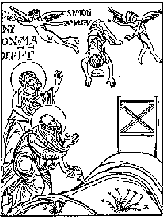




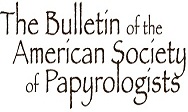
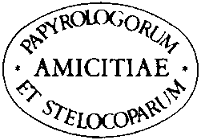
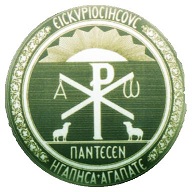





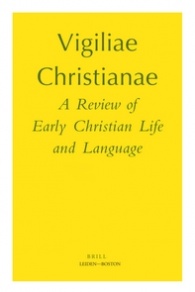






Quite an interesting text! Any estimates about a possible date?
Glad you find the text interesting. That is the most important thing! I think it is a really important text and is unknown beyond a small circle.
As to date… a question with which I will deal properly when I get to write the intro which will form part of the more permanent and conventional publication (together with the annotation, and which will occur when and only when, as somebody who claims no expertise in Coptic, I am assured that the translation and text are relatively free of blunders)… these things are notoriously difficult to date due to the fact that they are rather like snowballs, gathering material as they go and trapping within themselves material which tends to reflect periods earlier than their redaction. Thus I pick up echoes here and there of the Didache. And there are no big giveaways that I can see within the text. However… the emphasis on monachai and the absence of any recognition of organized monasticism tends to point to the earlier part of the fourth century rather than the latter (though I am aware of at least one fifth century monachē). Again an argument from silence, but the lack of any reference to persecution tends to point towards the fourth century (post Constantine) rather than pre-. Also, however, to be taken into account is what looks like a homily on the Mother of God which has been redacted into the material. No evidence, but my gut feeling is that this is later…, which might indicate a later level of secondary redaction (as Revillout, I recollect, suggested.) (I do not count the inclusion of the word theotokos here as this is only in one late textual witness (B) and may well be the work of the copyist.) However, again on this point, it has been argued that Ambrose Virg. had read this part of the gnomes (though it is equally possible, in my view, that he had read one of the sources, or had access to one of the traditions, namely the frequent angelic visitations which Our Lady received) which pushes back to the fourth again. Any advance? Athanasian authorship has been claimed, but is not widely accepted. Finally, it is transmitted alongside the Syntagma Doctrinae, which I have dated fairly precisely elsewhere to the 380s/390s. So we would probably not be way out if we placed the production in the same period, i.e. between 360 and 400.
Thanks. Trinitarian-theology wise, the text seems to espouse (in the first paragraph) a pneumatology that does not consider the Holy Spirit a creature, and yet does not accord the Spirit a role in creation equal to the Father and Son, i.e. the Father creates through the Son, and the Spirit increases creatures. Therefore, a context in which fully pro-Nicene Trinitarian thelogy had not yet been accepted seems most likely — the third quarter of the fourth century is the best bet, but this may me too precise.
Pingback: Ancient/Middle East Academic Resources Online
Pingback: Alin Suciu has been kind enough to post | ancientchurchorders
In line 12 on page 18 —
“and do not look upon your wife alone” —
Shouldn’t this say, instead, “and look upon your wife alone”?
Between 360 and 400? Lection-readings from the Apostle and from the Gospels at that time??
Thanks for this, and for the other comment. There was an error in p18 line 12, though not that which you suggest… As revisions are made the version on academia.edu will be updated. As to the lections question, I don’t know about Egypt, but there were lections from apostle and Gospels in 4C Jerusalem. And apologies AS for filling up your blog!
No problem, feel free to discuss your work here.
I’m not a Coptologist at all, but I can’t find in the very beginning of your translation – « Christ is Lord » – the words “auw pnoute”. Are you translating here B ?
Many thanks. This goes down as a howler, from which you have rescued me. Correction made. And just to clarify…, the translation should reflect the eclectic text as given, selected highlights of variations between the witnesses being given in the footnotes.
I have perpetrated (and published!) a few howlers over the years, and publishers won’t do erratum slips any more, so as time allows I am posting e-rrata to my ancientchurchorders blog on wordpress.